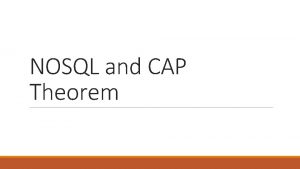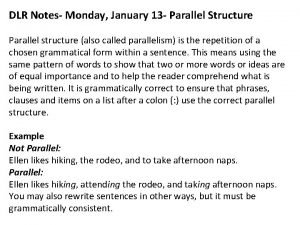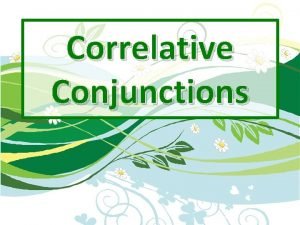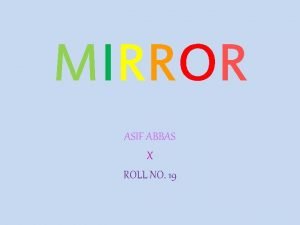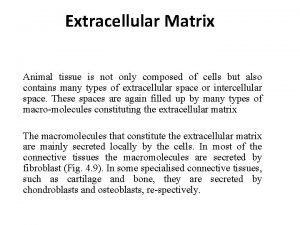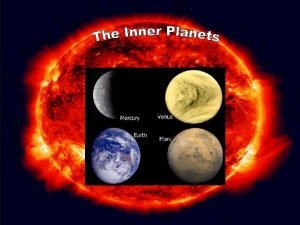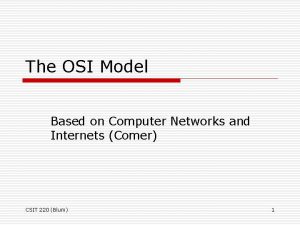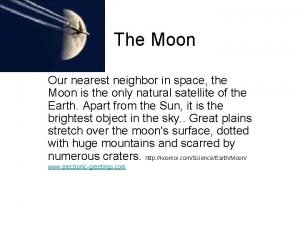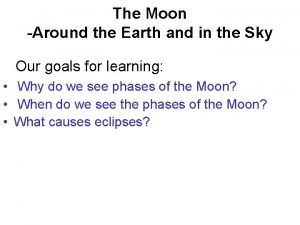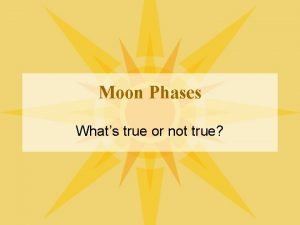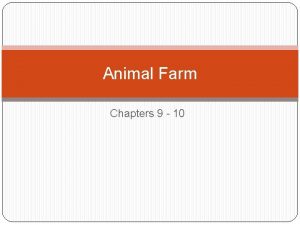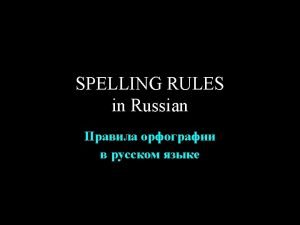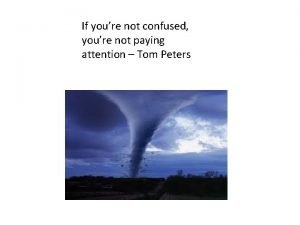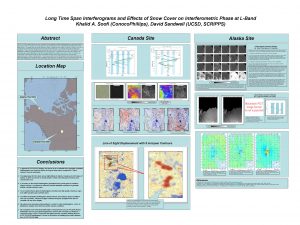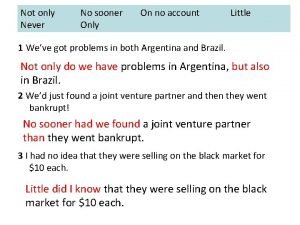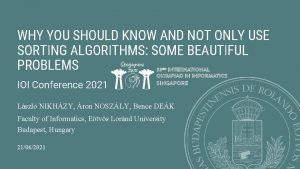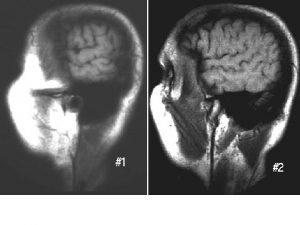Why only take 2 interferograms Why not take

































- Slides: 33

Why only take 2 interferograms? Why not take 2*N ? The birth of the TAURUS concept Note: A single interferogram only contains (1/N)th of in spatial information Scanning the FP across a full FSR is a natural way to: • Recover ALL of the spatial information • Resolve the fundamental ambiguity in the individual interferograms Scanning can be achieved in 3 ways: a) Changing : - by tilting the FP or by moving the image across the fringes as in photographic interferograms (to partially resolve ambiguity) b) Changing : - by changing the pressure of a gas in the FP gap as in 0 th dimensional scanning with eg: propane c) Scanning d: - by changing the physical gap between the plates very difficult since need to maintain parallelism to /2 N, at least TAURUS = QI etalons + IPCS … c 1980 Aug-Nov, 2008 IAG/USP (Keith Taylor)

Queensgate Instruments (ET 70) Aug-Nov, 2008 IAG/USP (Keith Taylor)

Queensgate Instruments (Capacitance Micrometry) FP etalons Piezo transducers (3) CS 100 controller Construction • Super-flat /200 base • Centre piece (optical contact) • Top plate Capacitors • X-bridge • Y-bridge • Z-bridge (+ stonehenge) Aug-Nov, 2008 IAG/USP (Keith Taylor) Scanning d over 1*FSR m (m-1) ; d d + ( /2)

Alec Boksenberg and the Image Photon Counting System (IPCS) Perfect synthesis … Imperial College, London QI etalons + CS 100 TAURUS 16 Mbyte datacubes University College, London IPCS } Aug-Nov, 2008 IAG/USP (Keith Taylor)

How big a field? From before, Jacquinot central spot given by: R = 2 or: R ~ 8 2/ 2 ~ 8 2(d/DT)2/ J 2, where J is the angle on the sky. However, given an array detector, we can work off-axis: So, how far? Answer: Until the rings get narrower than ~2 pixels (the seeing disk) Now, from the Airy Function we obtain: d /d = -1/ 0. sin( ) Aug-Nov, 2008 The full TAURUS field, F is then: F = 2 2(d/DT)2/R F/ J ~ 20, typically IAG/USP (Keith Taylor) or ~400 in

TAURUS Datacube Recalling the phase delay equn: m = 2 l. cos For small values of : goes as [1 – ( 2/2)] where tan-1[(y-y 0]/[x-x 0]) and (x 0, y 0) = centre of FP fringes (x 1, y 1) is shifted in z-dirn w. r. t. (x 0, y 0) and this -shift is thus ~parabolic in It is also periodic in “m”. We thus refer to this shift as a “Phase-correction” So the surface of constant is a “Nested Parabola” Cut through a “Nested Parabola and you get a set of rings and these rings are the FP fringes. Aug-Nov, 2008 IAG/USP (Keith Taylor)

Wavelength Calibration (converting z to ) As shown, surfaces of constant , as seen in an (x, z)-slice are defined by a set of nested parabolæ, equally spaced in z. Any (x, y)-slice within the cube cuts through these nested paraboloids to give the familiar FP fringes (rings). Now -calibration requires transforming z where: l(z) = l(0) + az a is a constant of proportionality. Constructive interference on axis (x 0, y 0) gives: az 0 = m 0/2 - l(0) but an off-axis (x, y) point transmits the same 0 at (z 0 + pxy) where: apxy = l(z 0). (sec xy – 1) Aug-Nov, 2008 IAG/USP (Keith Taylor)

Phase Correction z I 0(z) z z Phase corrected I 0( ) at (x 1, y 1) at (x 2, y 2) The 2 D phase-map, p(x, y), can be defined such that: p(x, y) = m z 0(sec – 1) The phase-map, p(x, y), can be obtained from a -calibration data-cube by illuminating the FP with a diffuse monochromatic source of wavelength, . Note: Phase-map is discontinuous at each z Aug-Nov, 2008 IAG/USP (Keith Taylor)

The Phase-Map The phase-map is so called since it can be used to transform the raw TAURUS cube, with its strange multi-paraboloidal iso-wavelength contours into a welltempered data cube where all (x, y)-slices are now at constant wavelengths. The process is called phase-correction since it represents a periodic function of period, z. ie: If the z-value (z’) of a phase-shifted pixel exceeds the z-dimensions of the data-cube, then the spectra is simply folded back by one FSR to (z’ - z). It will be noted that the phase-map (as defined previously) is independent of and hence in principle any calibration wavelength, cal, can be used to phasecorrect an observation data-cube at an arbitary obs, remembering that: 2 & z = /2 But also, the phase-map can be expressed in -space as: xy = 0(1 - cos ) and hence is also independent of gap, l, and thus applicable to all FPs at all . Aug-Nov, 2008 IAG/USP (Keith Taylor)

Order (m) and gap (l) determination The periodicity of the FP interference fringes makes -calibration non-trivial. The paraboloidal mapping from z doesn’t exactly help, either! Nevertheless, using 2 calibration wavelengths: Say: 1 and 2, peak on-axis at z 1 and z 2 The trick is to find m 1 (and hence m 2), the order of interference. From m we can infer the gap, l , and hence obtain a -calibration where: az 0 = m 0/2 - l(0) Then: m 2 m 1 = 1 z 2 – z 1 2 z m 1 ( 2) 2 1 If m 1 can be estimated (from manufacturers specs or absolute capacitance measures) then we can search for a solution where m 2 is an integer. This can be an iterative process with several wavelength pairs. Clearly the further 1 and 2 are apart, the more accuracy is achieved. Aug-Nov, 2008 IAG/USP (Keith Taylor)

Wavelength Calibration If m 1 can be estimated (from manufacturers specs or absolute capacitance measures) then we can search for a solution where m 2 is an integer. This can be an iterative process with several wavelength pairs. Clearly the further 1 and 2 are apart, the more accuracy is achieved. Once the interference order, m 1, for a known wavelength, 1, has been identified then wavelength calibration is given by: = 0 Aug-Nov, 2008 { (zm zz ) + 1} 0 0 0 IAG/USP (Keith Taylor)

FPP in collimated beam • Interference fringes formed at infinity: • Sky and FP fringes are con-focal • Detector sees FP fringes superimposed on sky image IF Aug-Nov, 2008 FP IAG/USP (Keith Taylor)

FPI in image plane • Interference fringes formed at infinity: • Sky and FP fringes are not con-focal • Detector sees FP plates superimposed on sky image • ie: No FP fringes seen on detector • FP is not perfectly centred on image plane (out of focus) to avoid detector seeing dust particles on plates. FP IF Aug-Nov, 2008 IAG/USP (Keith Taylor)

FP (or Interference Filter) in image plane The FP still acts as a periodic monochromator but the angles into the FP (or IF) must not exceed the Jacquinot criteria, which states that: 2 < 8 2/R (or R = 2 ) At f/8: = 2. tan-1(1/16) ~7. 2º, so R < 500 At f/16: = 2. tan-1(1/32) ~3. 6º, so R < 2, 000 Note: the Fo. V is determined not by the width of the fringes but by the diameter of the FP. Also, an IF is simply a solid FP ( ~2. 1) with very narrow gap. Aug-Nov, 2008 IAG/USP (Keith Taylor)

Data-cube science Aug-Nov, 2008 IAG/USP (Keith Taylor)

FP observations of NGC 7793 on the 3. 6 m. • Top left: DSS Blue Band image. • Top right: Spitzer infrared array camera (IRAC) 3. 6μm image. • Middle left: Hα monochromatic image. • Middle right: Hα velocity field. • Bottom: position-velocity (PV) diagram. Aug-Nov, 2008 IAG/USP (Keith Taylor)

FP observations of NGC 7793 on the 36 cm. • Top left: DSS Blue Band image. • Top right: Spitzer IRAC 3. 6μm image. • Middle left: Hα monochromatic image. • Middle right: Hα velocity field. • Bottom: PV diagram. Aug-Nov, 2008 IAG/USP (Keith Taylor)

ADHOC screen shot (Henri) Aug-Nov, 2008 IAG/USP (Keith Taylor)

ADHOC screen shot (Henri) Aug-Nov, 2008 IAG/USP (Keith Taylor)

Imaging Fourier Transform Spectrographs (IFTS) FTS = Michelson Interferometer: IFTS = Imaging IFTS over solid angle, . • Beam-splitter produces 2 arms; • Light recombined to form interference fringes on detector; • One arm is adjustable to give path length variations; • Detected intensity is determined by the path difference, x, between the 2 arms. Aug-Nov, 2008 IAG/USP (Keith Taylor)

IFTS theory (simple version) Given that frequency, = 1/ (units of “c”): Phase difference between two mirrors = 2 x So recorded intensity, I, is given by: 1 x ( , [1 + cos(2 x)] = ) I 2 2 Now, if we vary x in the range: x/2 , continuously then: and I(x) = B( ). (1 + cos 2 x). d - B( ) = I(x). (1 + cos 2 x). dx - These represent Fourier Transform pairs. Spectrum B( ) is obtained from the cosine transformation of the Interferogram I(x) Aug-Nov, 2008 IAG/USP (Keith Taylor)

IFTS reality (simple version) • At x = 0: the IFTS operates simply as an imager; • White light fringes – all wavelengths behave the same • At all other x-values, a subset of wavelengths constructively/dsitructively interfere • For a particular , the intensity varies sinusoidally according to the simple relationship: 1 I ( ) = [1 + cos(2 x)] 2 In reality, of course, x goes from 0 xmax which limits the spectral resolving power to: 2 xmax = R 0 = eg: if xmax = 100 mm and = 500 nm then: R 0 1. 105 Aug-Nov, 2008 IAG/USP (Keith Taylor)

IFTS in practice Since we are talking here about an imaging FTS then what is it’s imaging Fo. V? Circular symmetry of the IFTS is identical to the FP and hence: 2 l. cos = m And also: R >> 2 limited only by the wavelength variation, , across a pixel: However, in anaolgy to the FP Phase-correction is required in order to accommodate path difference variations over the image surface. Aug-Nov, 2008 IAG/USP (Keith Taylor)

Pros & Cons of an IFTS Advantages: Arbitary wavelength resolution to the R limit set by xmax; A large 2 D field of view; A very clean sinc function, instrumental profile cf: the FP’s Airy Function A finesse N = 2 / which can have values higher than 103 Disadvantages: Sequential scanning – like the FP. However, the effective integration time of each interferogram image can be monitored through a separate complementary channel, if required; Very accurate control of scanned phase delay is required Especially problematic in the optical At all times, the detector sees the full spectrum and hence each interferogram receives integrated noise from the source and the sky This compensates for the fact that all wavelengths are observed simultaneously which is why there is no SNR advantage over an FP; Also sky lines produce even more noise, all the time. Aug-Nov, 2008 IAG/USP (Keith Taylor)

Michelson Interfermeter (N = 2 interference ; n >>1) Aug-Nov, 2008 IAG/USP (Keith Taylor)

Hybrid and Exotic Systems • FP & IFTS are classical 3 D imaging spectrographs • ie: Sequential detection of images to create 3 D datat cubes: • FP = Wavelength scanning • IFTS = Phase delay scanning There are, however, techniques which use a 2 D area detector to sample 2 D spatial information with spectral information, symultaneously. These we refer to as: Hybrid Systems Examples of this are: Integral Field Units (IFUs). These can use either: Lenslets Fibres Lenslets + Fibres Mirror Slicers Aug-Nov, 2008 IAG/USP (Keith Taylor)

Integral Field Spectroscopy • Extended (diffuse) object with lots of spectra • Use “contiguous” 2 D array of fibres or ‘mirror slicer’ to obtain a spectrum at each point in an image Tiger SIFS MPI’s 3 D Aug-Nov, 2008 IAG/USP (Keith Taylor)

Lenslet array (example) LIMO (glass) Pitch = 1 mm Some manufacturers use plastic lenses. Pitches down to ~50 m Used in SPIRAL (AAT) VIMOS (VLT) Eucalyptus (OPD) Aug-Nov, 2008 IAG/USP (Keith Taylor)

Tiger (Courtes, Marseille) Technique reimages telescope focal plane onto a micro-lens array Feeds a classical, focal reducer, grism spectrograph Micro-lens array: Dissects image into a 2 D array of small regions in the focal surface Forms multiple images of the telescope pupil which are imaged through the grism spectrograph. This gives a spectrum for each small region of the image (or lenslet) Without the grism, each telescope pupil image would be recorded as a grid of points on the detector in the image plane The grism acts to disperse the light from each section of the image independently So, why don’t the spectra all overlap? Aug-Nov, 2008 IAG/USP (Keith Taylor)

Tiger (in practice) Enlarger Lenslet array Aug-Nov, 2008 Detector Collimator IAG/USP (Keith Taylor) Grism Camera

Avoiding overlap n ctio e r i d - • The grism is angled (slightly) so that the spectra can be extended in the -direction • Each pupil image is small enough so there’s no overlap orthogonal to the dispersion direction Represents a neat/clever optical trick Aug-Nov, 2008 IAG/USP (Keith Taylor)

Tiger constraints • The number and length of the Tiger spectra is constrained by a combination of: • detector format • micro-lens format • spectral resolution • spectral range • Nevertheless a very effective and practical solution can be obtained Tiger SAURON OSIRIS (on CFHT) (on WHT) (on Keck) True 3 D spectroscopy – does NOT use time-domain as the 3 rd axis (like FP & IFTS) – very limited Fo. V, as a result Aug-Nov, 2008 IAG/USP (Keith Taylor)

Tiger Results (SAURON – WHT) Aug-Nov, 2008 IAG/USP (Keith Taylor)
 Take only photographs leave only footprints
Take only photographs leave only footprints Hey hey bye bye
Hey hey bye bye Sadlier vocabulary workshop level d unit 1
Sadlier vocabulary workshop level d unit 1 Im a sissy
Im a sissy Does this table represent a function why or why not
Does this table represent a function why or why not Does the table represent a function why or why not
Does the table represent a function why or why not Why or why not
Why or why not Take a bus or take a train
Take a bus or take a train I would rather eat potatoes than to eat rice.
I would rather eat potatoes than to eat rice. Everyone selected to serve on this jury
Everyone selected to serve on this jury Scalar quantity
Scalar quantity Not only sql
Not only sql Do not fear only believe
Do not fear only believe My dog not only likes to play fetch, but also chase cars.
My dog not only likes to play fetch, but also chase cars. These are words that are called joiners or connectors.
These are words that are called joiners or connectors. For internal use only do not distribute
For internal use only do not distribute I am not cruel only truthful
I am not cruel only truthful Pronatalist bias
Pronatalist bias He not only composed
He not only composed Only planet not named after a god
Only planet not named after a god Dont ask
Dont ask Please do not take sausage pizza away
Please do not take sausage pizza away To take something that doesn't belong to you
To take something that doesn't belong to you Sentences with decide
Sentences with decide Sentences with decide
Sentences with decide Quarter moon
Quarter moon Why do we see only one side of the moon
Why do we see only one side of the moon Why do we see only one side of the moon
Why do we see only one side of the moon If i could only teach you one thing
If i could only teach you one thing Why are only the young pigs being educated
Why are only the young pigs being educated How seedless plants reproduce
How seedless plants reproduce 5 vowels in english
5 vowels in english Why is species the only linnaean rank defined naturally
Why is species the only linnaean rank defined naturally If you're not confused you're not paying attention
If you're not confused you're not paying attention











